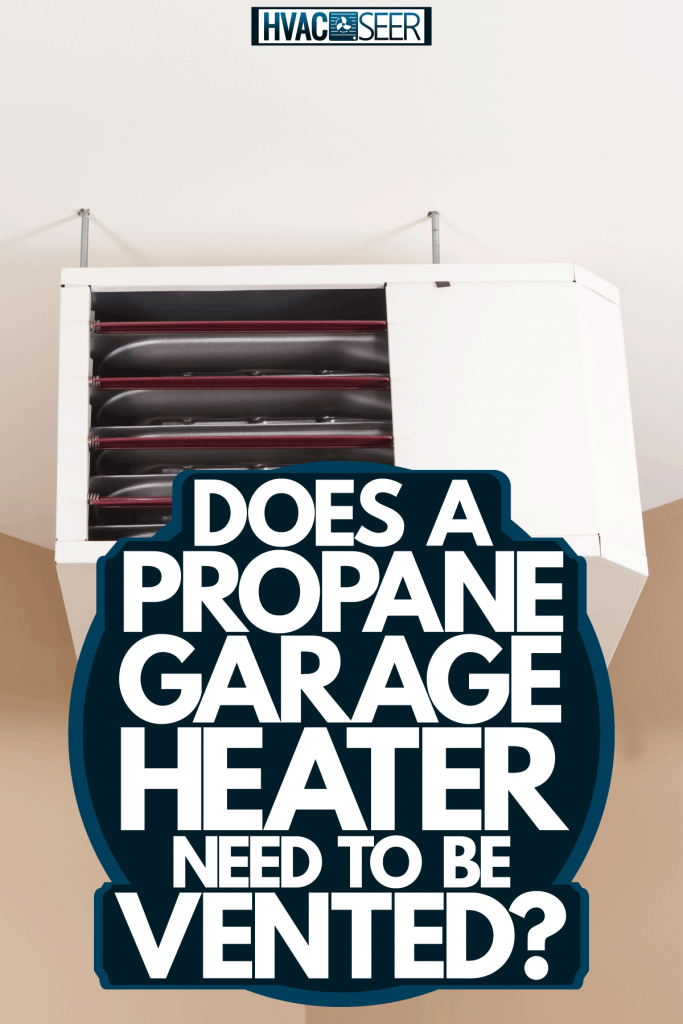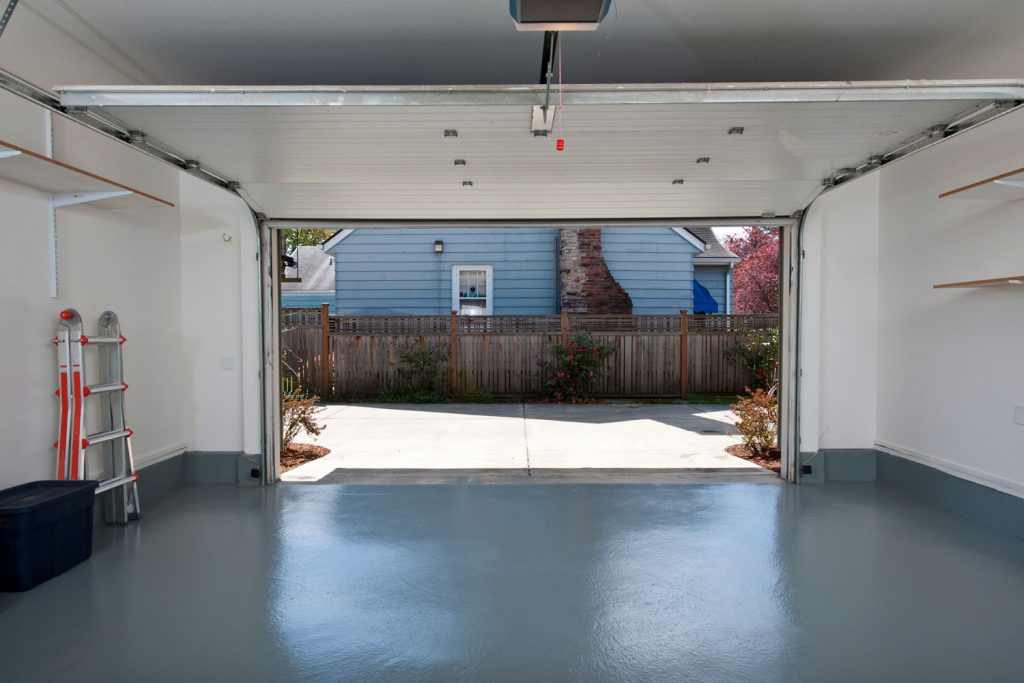Looking for heating options is an exhausting activity. There are many options to select from, but you might have the idea to install a propane heater. It's one of the better heating systems for a garage. Though, if you're wondering if a propane garage heater needs to be vented, we've found the answer!
Like most heating options, proper ventilation is necessary to get the best results. Propane heaters need oxygen to breathe. So, in a garage, it will share the oxygen you consume. Additionally, without proper ventilation, you increase the risk of carbon monoxide poisoning. For this reason, you need to make sure you have adequate ventilation for the system.
There's still more to learn about propane heaters. Do you want to know how to vent a propane heater? Is it possible to run one in a closed garage? These are some vital pieces of information to become familiar with for your own safety. If you'd like to know more, keep reading ahead.

How A Propane Heater Functions
Before we get into why ventilation is crucial, we have to become familiar with the process a propane heater goes through. This way, we'll learn the dangers associated with using one.
So, if you want to know the kinds of gases they can produce as a by-product, let's get started!
Fuel
As the name implies, propane heaters use propane as fuel to heat your home. While it's typically in gas form, it's compressed into a liquid for use in a heater.
Additionally, propane does not act alone. Propane heaters also use other compounds like propylene and butane. Still, it mostly uses propane as fuel.
Igniter
It needs a way to start a flame. A propane heater does this by using a piezoelectric igniter.
To ignite a flame, it uses material that has the property to develop an electric potential. Then, using a spring-loaded hammer, it strikes to generate a spark. Thus, the flame begins.
Heat Distribution
Of course, simple ignition isn't going to give us efficient heating. So, it needs an element that allows it to distribute the propane's heat efficiently. Thus, it uses porcelain to accomplish this.
Safety
We won't have to go too far into the details of how a propane heater works. However, we established a basic understanding of how a propane heater functions.
Now comes the safety concerns associated with how it ignites a flame. As some suggest, carbon monoxide is a product of incomplete combustion.
In enclosed spaces, it presents a danger of carbon monoxide poisoning. For this reason, if you're planning to use a propane heater in the garage, you should pay close attention to its specific use.
Some propane heaters can be used indoors safely. Others won't be for the reasons covered above.
Additionally, not only does it present a carbon monoxide hazard. The propane itself can leak and settle on the floor. If there's enough build-up, you run the risk of a fire or, in the worst case, an explosion.
Ventilation
Now that we know the dangers propane heaters can present, it makes sense why a propane garage heater needs adequate ventilation.
If propane manages to leak, you will need to stop using the heater immediately. You can open all the doors and windows to vent the gas outside.
Click here to see this propane heater on Amazon.
Can You Run a Propane Heater in a Closed Garage?

For safety reasons, you shouldn't run a propane heater in a closed garage. Ventilation is necessary in case of emergencies. If you must use it in a closed garage, you should never leave it unattended. It also depends on the type of propane heater you use.
For example, there are two propane heaters you can choose from. You can mount one type of heater. The fuel source, the propane tank, will be outside. These are on the more expensive side. But, they are vented and should be safe for use in a closed garage.
Indoor Propane Heater
Otherwise, the other type of propane heater you could use is a portable one. As some suggest, the problem with portable propane heaters is not the carbon monoxide it produces. For indoor use, you will likely have a carbon monoxide detector to mitigate the dangers.
But, carbon monoxide is the more obvious danger that everyone can acknowledge. If you've been paying close attention, you'll remember that propane shares the oxygen in the room. For this reason, most propane heaters have a low oxygen safety shutoff.
So, you need a way to allow oxygen to enter the room. If you're working in an enclosed space, you run the risk of depleting the room of oxygen quickly. For this reason, you'll have to set the propane heater in an area that still allows ventilation.
How Do I Vent My Propane Heater in My Garage?

Now that leaves us to find out how to accommodate a propane heater for safety concerns and the best results.
Indoor propane heaters will come with a low oxygen sensor, overheat protection, and an automatic shutoff feature if it tips over. Some recommend setting the heater near a window or another source of ventilation.
Additionally, you should set the heater on a flat surface away from any combustible items. It should face the part of the garage that will require the most heat.
That should be enough to provide ventilation for an indoor heater. Leave the window open a little to allow some oxygen inside.
How Much Ventilation Do I Need for a Propane Heater in My Garage?
After learning about the dangers of inadequate ventilation, you might want to get into specifics. It's understandable.
Although propane heaters come with a low oxygen sensor, you most likely will feel the effects of low oxygen before noticing the sensor itself. Physical symptoms can show up, such as rapid breathing, clumsiness, rapid heart rate, and more.
Since you're going to be working in the area as the heater is running, you might not be able to notice the room is running low on oxygen until it's too late. So, it begs the question, how much ventilation do we need for the garage? Not all garages are the same.
Enough Fresh Air
The answer depends on the size of your garage. As some suggest, the general rule for adequate ventilation is—enough fresh air. We acknowledge that answer may be unsatisfying. After all, enough fresh air is not a specific answer.
It's a tough question to answer because you can't track the amount of air you let in. There shouldn't be much concern for mounted propane heaters.
They are vented to let carbon monoxide outside. Additionally, all the propane operations are housed within the heater.
Regarding ventless portable propane heaters, the main source of ventilation will be through an open window or door.
So, the best answer would be—the more heat you require for the garage, the more ventilation you will need. From other explanations online, we can assume that large spaces will likely need some windows open coupled with an open door, etc.
Ensuring Your Safety
Regardless, sometimes it's tough to figure out if you're giving the heater enough ventilation. For this reason, you will need to have carbon monoxide detectors in the garage. Additionally, an inspection of how the heater is operating is necessary.
As some suggest, a yellow flame indicates that the burner is not working as intended. Therefore, it's producing more carbon monoxide than it should.
In this case, the low oxygen sensor should kick in. If you want a demonstration of how it works, here's a YouTube video to explain it:
Still, some users in the comments warn that there's a danger of carbon monoxide poisoning. So, you can't rely on the oxygen depletion system alone. You have to keep a close eye on the heater.
To ensure you'll get the best results, consult the instruction manual before using a propane heater in the garage. If that isn't enough, seek advice from propane service professionals near you.
Final Takeaway
Propane heaters are a cheap and efficient way to provide warmth in the garage. However, like most heating solutions, they carry safety concerns that you must become familiar with.
This way, you avoid any accidents that can result in drastic consequences. We hope you found the information above insightful!
Before you go, do you have other temperature concerns for your garage? Are you wondering what options you have to insulate it? If you want to explore some ideas, check out our post here.
On the topic of insulation, are you also wondering if the ceiling needs to be insulated too? To find out more, check out our post here. Until next time!

